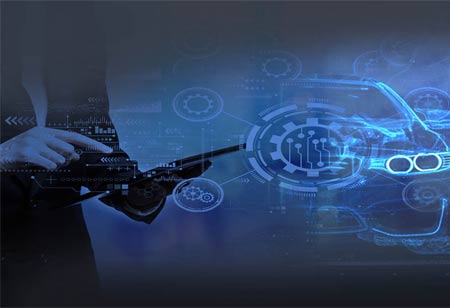THANK YOU FOR SUBSCRIBING
THANK YOU FOR SUBSCRIBING
Be first to read the latest tech news, Industry Leader's Insights, and CIO interviews of medium and large enterprises exclusively from Auto Tech Outlook

By
Auto Tech Outlook | Tuesday, February 07, 2023
Stay ahead of the industry with exclusive feature stories on the top companies, expert insights and the latest news delivered straight to your inbox. Subscribe today.
As the automotive industry shifts towards electric vehicles, there is a need for new and innovative components that can help reduce emissions and increase efficiency. These components include batteries, power electronics, motors, and advanced materials.
FREMONT, CA: The automotive industry is the largest transport sector, with about 80 to 90 million cars sold annually. There are 1.1 billion cars in use worldwide, which makes them a significant contributor to road emissions, making green policymakers naturally focus on this sector.
Research predicts electric cars will generate 76 percent of all e-transport revenues. Car markets provide the biggest opportunities for electric vehicle supply chain players, including advanced materials, batteries, power electronics, and motors.
Their innovations in technology, regulation, and business models enable electrification in other transportation sectors as well.
Advanced Li-ion battery cells and packs: Lithium-ion batteries with graphite anodes and layered oxide cathodes account for a large part of the electric vehicle market. Improvements and alternatives to Li-ion batteries become increasingly important when they reach their performance limits and environment.
It includes anodes made of silicon and Li-metal, solid electrolytes, and cathodes made of high-Ni metals, as well as cell design factors. Li-ion will remain dominant in the battery market due to the importance of electric vehicles, specifically battery electric cars, in determining battery demand. Energy density, cathodes, anodes, and cell design will need to be improved gradually.
Power electronics: The advancements in automotive power electronics like inverters, onboard chargers, and DC-DC converters allow for a reduction in battery pack capacity or an increase in range. High switching frequencies, increased power densities, and higher operating temperatures are all demanded of power module package materials in this transition, all while maintaining a long service life.
Electric motors: With new designs that improve power and torque density and more considerations around materials, the electric motor market continues to evolve today. Developments such as axial flux motors and various original equipment manufacturers (OEM) are incremental improvements and include eliminating rare-earth materials.
The performance metrics of electric motors can be divided into several categories. Electric vehicles weighing less and taking up less space, power, and torque density enable improved driving dynamics. The efficiency of drive cycles is another important factor. A more efficient battery means less energy is wasted when the vehicle accelerates, leading to an extended range from a given battery capacity. The numerous considerations have influenced the EV market adoption of a permanent magnet, induction, and wound-rotor motors in motor design.
Fuel Cells: Many challenges face fuel cell vehicle deployments, including increasing hydrogen refueling infrastructure and lowering fuel cell system components' costs. Providing low-cost 'green' hydrogen produced by electrolysis of water using renewable electricity will also be essential for FCEV to meet sustainability requirements.
 Copyright © 2025 AutoTech Outlook. All Rights Reserved | Privacy Policy | Subscribe | Sitemap | About us | Feedback Policy | Editorial Policy
Copyright © 2025 AutoTech Outlook. All Rights Reserved | Privacy Policy | Subscribe | Sitemap | About us | Feedback Policy | Editorial Policy 



